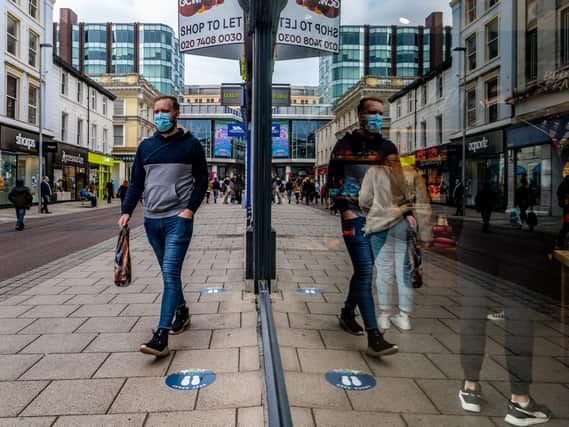Economy contraction less severe than first thought


The Office for National Statistics (ONS) revised the second quarter figure from an earlier estimate of 20.4 per cent, while updated figures also showed a steeper contraction of 2.5 per cent between January and March.
It previously estimated that GDP fell 2.2 per cent in the first quarter.
Advertisement
Hide AdAdvertisement
Hide AdDespite the revisions, the UK still tumbled into the largest recession since current records began and fared worse in the second quarter than any of its advanced economic counterparts.
The ONS said: "While it is still true that these early estimates are prone to revision, we prefer to focus on the magnitude of the contraction that has taken place in response to the coronavirus pandemic.
"It is clear that the UK is in the largest recession on record.
"The latest estimates show that the UK economy is now 21.8 per cent smaller than it was at the end of 2019, highlighting the unprecedented size of this contraction."
Advertisement
Hide AdAdvertisement
Hide AdSince the nadir of the recession in April, GDP has now grown for three months in a row, but has only made up around half of the ground lost during the pandemic, according to the ONS.
The lockdown saw a record-breaking 23.6 per cent fall in household spending between April and June, which economist Samuel Tombs at Pantheon Macroeconomics said was "at the root of the UK's underperformance".
Forced to stay at home during the lockdown, Britons ramped up their savings instead of spending - sending the household saving ratio soaring to an all-time high of 29.1 per cent in the second quarter.
This was up from the 9.6 per cent saving ratio in the first three months of the year, according to the ONS.
Advertisement
Hide AdAdvertisement
Hide AdMr Tombs said: "Households' spending appears to have rebounded strongly in the third quarter, as they spent some of the 'enforced' savings they accumulated in Q2."
But he added: "The still-low level of consumers' confidence, which has been weighed down by rising redundancies and the emerging second wave of Covid-19, suggests that households' saving rate will return in the fourth quarter to a level much higher than seen before the virus struck."
Support The Yorkshire Post and become a subscriber today.
Your subscription will help us to continue to bring quality news to the people of Yorkshire. In return, you'll see fewer ads on site, get free access to our app and receive exclusive members-only offers.
So, please - if you can - pay for our work. Just £5 per month is the starting point. If you think that which we are trying to achieve is worth more, you can pay us what you think we are worth. By doing so, you will be investing in something that is becoming increasingly rare. Independent journalism that cares less about right and left and more about right and wrong. Journalism you can trust.
Thank you
James Mitchinson
Comment Guidelines
National World encourages reader discussion on our stories. User feedback, insights and back-and-forth exchanges add a rich layer of context to reporting. Please review our Community Guidelines before commenting.